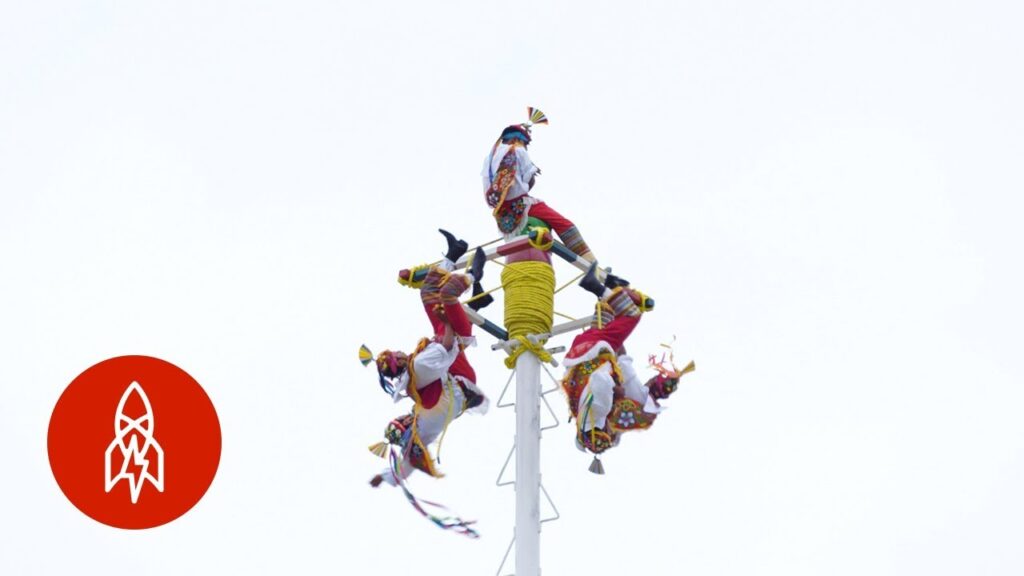Exploring the Significance of the Copilli in Mexican Culture
The Copilli, a term that originates from the Nahuatl language, holds a deep-rooted significance within Mexican culture. Historically, this headdress symbolized power and bravery among the Aztec warriors and was intricately tied to their identity and societal status. The Copilli wasn’t just a mere accessory; it was a distinctive emblem of honor and esteem, meticulously earned through valiant acts and noteworthy achievements in battle.
In contemporary Mexico, the Copilli remains a potent symbol of cultural pride and heritage. During folkloric festivities and national celebrations, you’ll often find dancers and performers donning replicas of these traditional headdresses. These colorful and ornate creations help to preserve the historical narrative of Mexico and pay homage to the ancient civilizations that helped shape the modern Mexican identity.
Beyond its historical and ceremonial uses, the Copilli also influences modern Mexican art and fashion. Designers frequently draw inspiration from the vibrant patterns and imposing designs of the Copilli, fusing them with contemporary styles to create unique pieces that resonate with Mexico’s past and present. This cross-era inspiration stands as a testament to the Copilli’s enduring legacy within the cultural landscape of the country.
As an object of study, the Copilli intrigues anthropologists and historians alike, offering invaluable insights into pre-Hispanic societies. The construction, materials, and designs of ancient Copilli provide a window into the customs, religious beliefs, and even the day-to-day life of the Aztecs. Such significations highlight the relevance of traditional artifacts in understanding the complex tapestry of Mexican ancestry, underlining the Copilli’s not just as a relic, but as a continuous narrative thread in the story of Mexico.
The Historical Roots of the Copilli: A Symbol of Aztec Heritage
The Copilli, a distinctive headdress, is emblematic of the Aztec civilization’s rich tradition and their deep-rooted respect for leadership and warrior prowess. Often constructed from precious materials such as feathers from the revered quetzal and adorned with gold, the Copilli was not merely decorative. It stood as a testament to the wearer’s status, courage, and achievements. For the Aztecs, these headdresses were a symbol of power and nobility, reserved for the mightiest of warriors and the most esteemed nobles—an accessory that crowned the heads of those who had shown exceptional bravery in battle or who had offered significant contributions to the empire.
The Copilli’s origins are entwined with mythology and the Aztecs’ cosmological beliefs. It is believed that the headdress was inspired by the headgear of the god Quetzalcoatl, the feathered serpent deity who was a central figure in Aztec religion and mythology. Quetzalcoatl was a creator god and represented the boundless potential and virtue, attributes greatly admired and sought after by the Aztecs. By wearing a Copilli, the Aztecs signaled their connection to this powerful divine influence and their aspiration to emulate the god’s esteemed qualities.
In addition to their symbolic significance, Copillis were also a manifestation of the intricate artistry and craftsmanship of the Aztec people. These elaborate headdresses required the skilled hands of artisans who specialized in featherwork—an art form known as Amanteca. These craftsmen meticulously selected feathers based on their color, size, and quality, harmoniously arranging them to create a stunning visual impact. The result was not just a piece of regalia but a work of art that displayed the wealth of natural resources under Aztec control and their sophisticated cultural achievements.
During significant ceremonies and events, the presence of the Copilli was crucial. It was during these public spectacles that the power and status of individuals were emphasized and celebrated. The Aztec emperor would don an especially luxurious and intricate Copilli, asserting his supremacy and divine right to rule. Military leaders, too, would wear headdresses denoting their victories and position within the military hierarchy. These rituals served to reinforce the social order and the cultural identity of the Aztec people.
Today, the Copilli continues to captivate scholars and enthusiasts of Mesoamerican cultures. Replicas of these headdresses are often seen during cultural festivals in Mexico, worn with pride by performers seeking to revive and honor the traditions of their ancestors. Even in contemporary society, the Copilli remains a powerful emblem of Aztec heritage, pointing to a time when these majestic headdresses projected the aura of gods among men, in one of the greatest civilizations of the ancient Americas.
Tenoch Huerta’s Embrace of Tradition: The Copilli in Black Panther 2
The Significance of the Copilli
In a standout performance, Mexican actor Tenoch Huerta brings a piece of indigenous heritage to the Hollywood big screen in «Black Panther 2.» Wearing a traditional headdress known as a Copilli, Huerta’s character pays homage to the rich tapestry of native Mesoamerican culture. The Copilli, which is Nahuatl for ‘crown’, was traditionally worn by the Aztec elite, notably their warriors and nobility. Its presence in the movie is not just a nod to indigenous artistry but a profound statement of identity and strength.
Design and Symbolism
The design of the Copilli worn by Huerta is a meticulous amalgamation of feathers, gold, and vibrant colors, representing the splendor of the Aztec empire. Embodying the spirit of the eagle, a significant animal in Aztec mythology, the headdress conveys the notion of power and vision. The inclusion of such a powerful symbol in the film emphasizes the importance of heritage in shaping a character’s identity and values in contemporary storytelling.
Reception and Impact
The sight of Huerta donning the Copilli drew widespread acclaim from audiences both within and beyond Mexico, sparking conversations about the representation of indigenous cultures in international media. For many, Huerta’s portrayal is a source of pride, providing visibility to a part of history often overlooked or misrepresented. By showcasing traditional regalia such as the Copilli, «Black Panther 2» has set a precedent for future films to honor and represent indigenous cultures with accuracy and respect.
Continuing a Legacy
Huerta’s role and his choice of attire in «Black Panther 2» arguably continues the legacy of those who have carried the Copilli before him. It serves as an educational touchpoint for viewers unfamiliar with Mesoamerican history, opening a dialogue and encouraging exploration into the depths of Mexico’s ancestral roots. Huerta’s performance and the presentation of the Copilli in the film serves as a powerful reminder of the enduring legacy of indigenous traditions and their place in modern narratives.
Unveiling the Mystique of the Copilli: More Than Just an Accessory
The Copilli, an elaborate headdress with deep roots in Mexican culture, stands as an emblem of power and spirituality that has captivated historians and cultural enthusiasts alike. Originally donned by the noble class and warriors of ancient Mesoamerican civilizations, this intricate adornment was much more than a simple decorative piece. The Copilli was a symbol of status and battle prowess, intricately tied to the identity and position of the wearer within the social and religious hierarchies of the time.
Crafted with an array of materials such as feathers, gold, and precious stones, the Copilli was designed to evoke the reverence of the gods, with the belief that its magnificence could curry favor and protection in both this life and the hereafter. The resplendent quetzal feathers, known for their vibrant green hues and striking length, were particularly sought after for their divine associations. The headdresses were painstakingly assembled to represent the majesty and power of their bearers, becoming central elements in ceremonial events and crucial battles.
Yet, the Copilli was not solely a fixture of the past; it has transcended time to become a symbol of cultural pride and artistic heritage in contemporary Mexico. Artisans today still create these headdresses, drawing on the same ancient techniques, as a means of reconnecting with and preserving their rich historical roots. These modern renditions of the Copilli continue to be a powerful expression of the enduring spirit and identity of the Mexican people, a tribute to the ancestors who once wore them.



